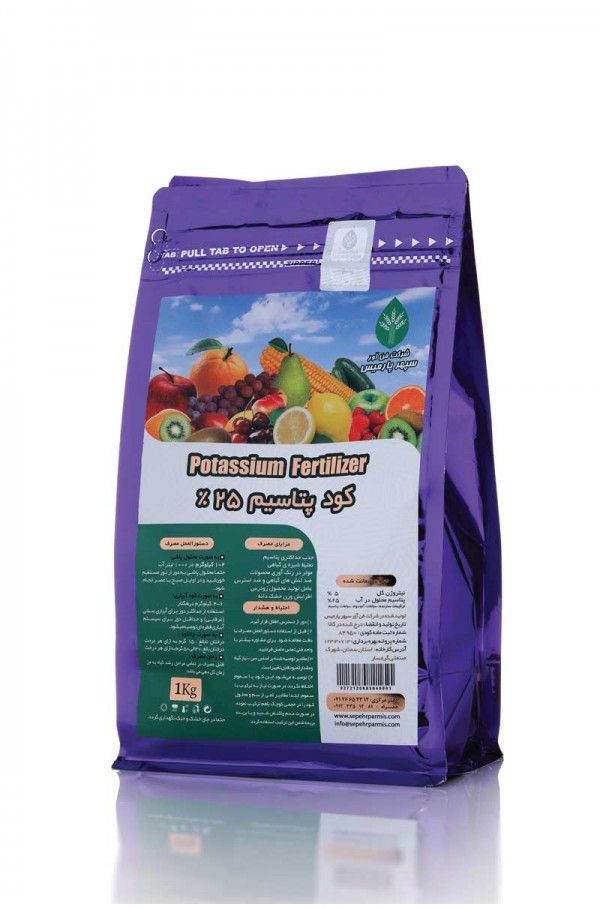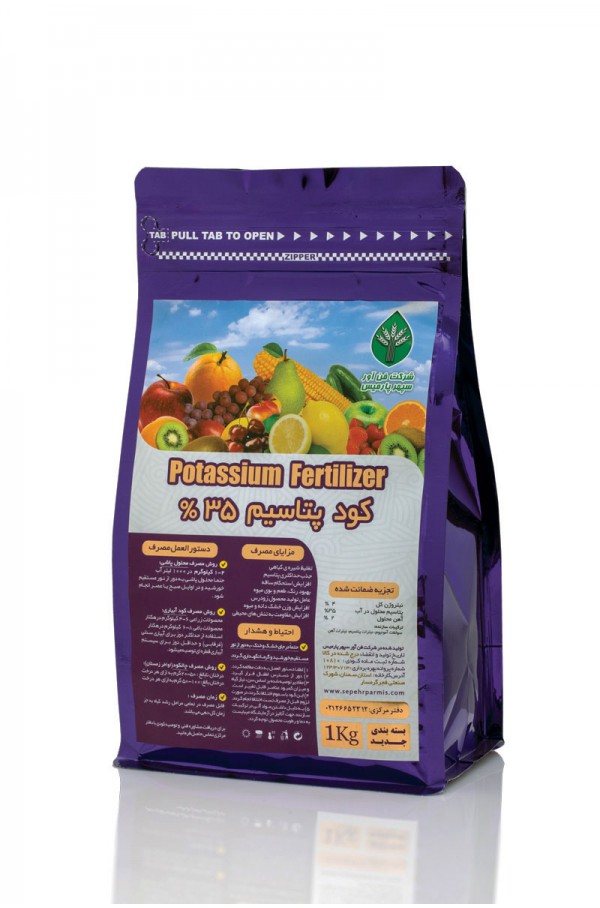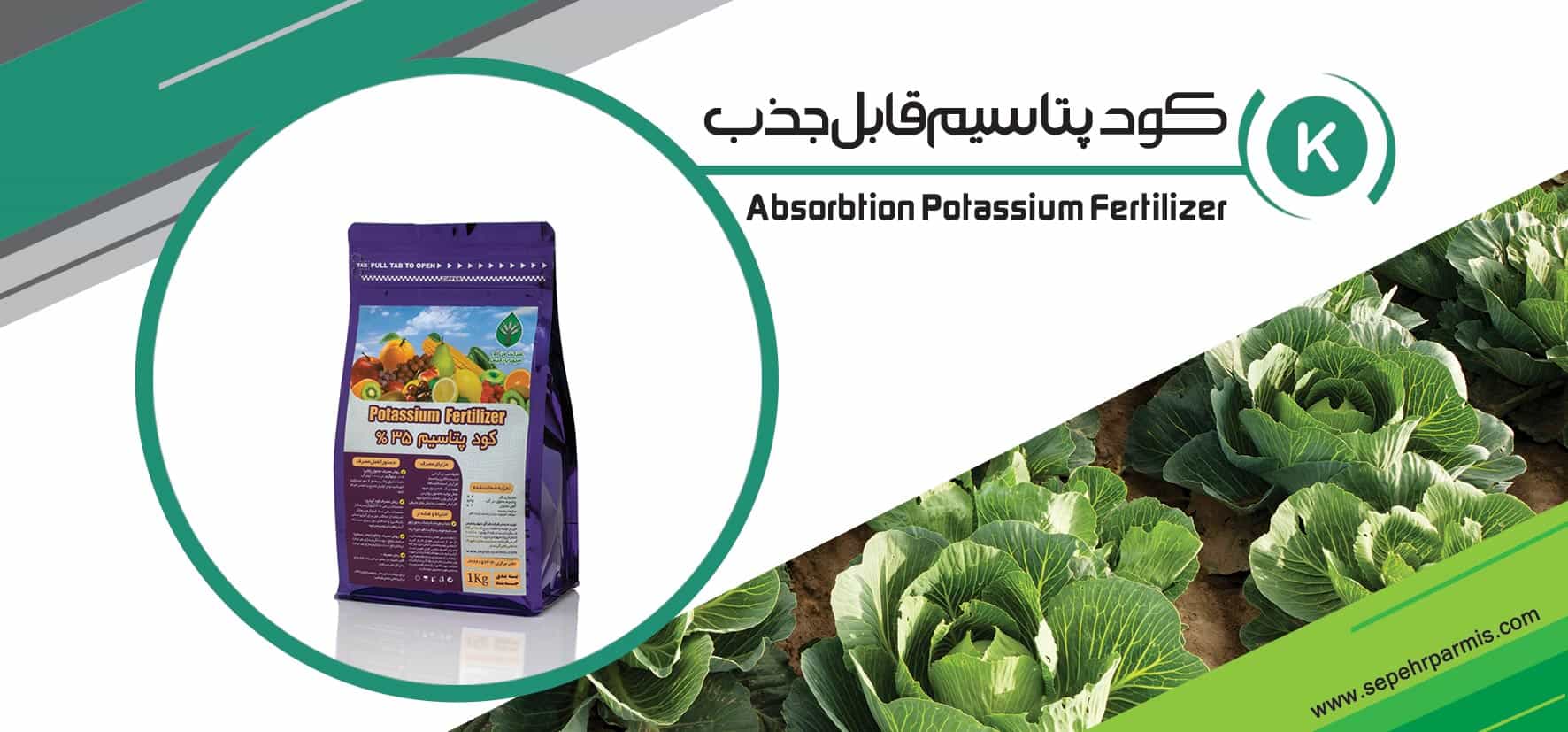
Absorbable Potassium Fertilizer

Complexed Potassium Fertilizer 35% contains absorbable ions, which makes it non-stabilized and has maximum absorption. Potassium plays a role as a basic element and activator of many enzymes in plants and increases the dry weight of seeds and fruits. Potassium, by concentrating plant sap in the plant, creates resistance to environmental stresses (freezing, heat, dryness, ...) and plant stress. But in general, high consumption of potash fertilizers causes them to remain inactive and not absorb potassium in the soil and plants. But this absorbable potassium fertilizer in a complex form helps to solve the potassium deficiency in the shortest time and due to the high quality of production, it has the capability of foliar application in fields, gardens and greenhouse plants.
Ingredients (Analysis) :
N 4%, Complex K 35%, Fe 4%

Foliar, Irrigation, DeepPlacement
1-2 Kg in 1000 liters of water
4-8 Kg per Hectare
30-50 Gr per each grown tree
During all stages of plant growth (expect flowering time on garden)
In plants, potassium element activates important plant enzymes in the formation of flowers, fruits, leaves and final growth. This element helps to regulate the water balance by regulating the opening and closing of the stomata, it improves the taste and smell of fruits and vegetables, the color of flowers and the strength of the stem. Potassium is necessary in the formation of sugar, starch, carbohydrates and help in photosynthesis.
And in protein synthesis, cell division in the roots and different parts of the plant is important. On the other hand, potassium makes plants resistant to environmental stresses, frosting, pests and diseases (especially pear fire blight, citrus fruits canker, fusarium wilt, etc.). By increasing cell turgorescence and internal pressure, potassium also freshens the plant cell wall.
Potassium deficiency appears in the form of burnt edges of the leaves, wilting and hanging down from the margin. Partial chlorosis is observed in older leaves, along with marginal necrosis (burnt tip of the leaves) and the distance between the nodes stays short. In potassium deficiency, the growth of the main stem and branches is stopped, the plant remains small. in severe deficiency; The drying of the branches also occurs from the end parts.
The symptoms of potassium deficiency in plants can be mentioned such as hollowness of the nuts and grain seeds, shriveling of leaves in peaches, plums and apricots and splitting of the leaves as well as burnt black spots on the edges of pear leaves.
One of the indicators of potassium deficiency in older or the lower leaves, is seeing necrosis along the length of the leaves, drying and withering of the plant, and a decrease in the resistance of the plant to stresses.
Related Products